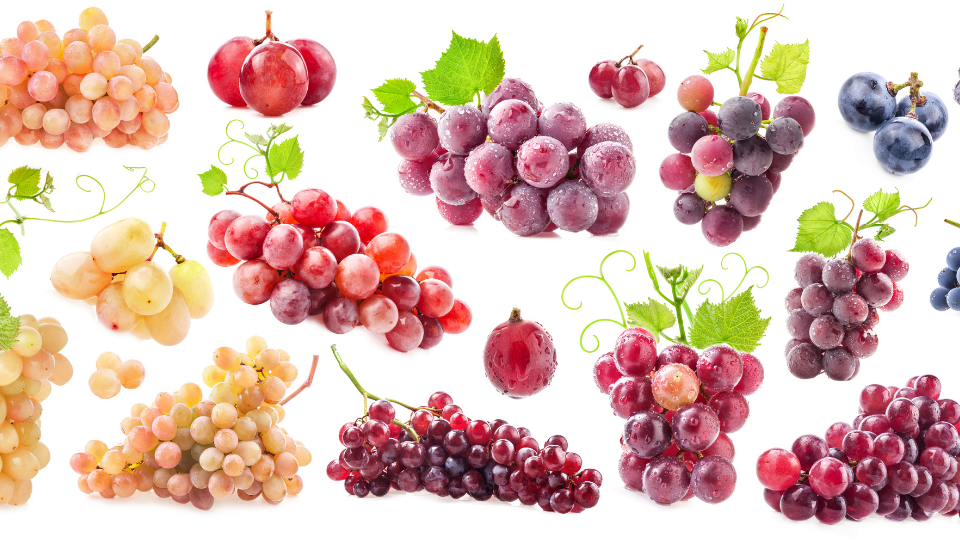

Grapes are an excellent addition to the home garden and are quickly becoming an important specialty crop in both home and farm production in Utah. Grapes are grown worldwide for wine, juice, raisins, table fruit, jams, and jellies. Selecting an appropriate variety for your climate and desired use is critical for success. This fact sheet introduces the major types of grapes and provides suggestions of grape varieties that can be grown in Utah. The companion fact sheets Grape Management and Grape Training and Trellising Basics provide additional information about grape production. Grapes can be divided into four main groups: American, European, French/American hybrids, and muscadine. American bunch grapes (Vitis labrusca) as a group are the hardiest and often have greater insect and disease resistance than European types. They are primarily used for juice and jelly, with limited use in fresh eating. They have strong flavors, sometimes described as foxy or musky, and are typically considered unsuitable for commercial wine production, although some varieties are valued in specialty and hobby winemaking. The skin on American grapes separates easily from the fruit (slipskin) and is usually considered undesirable for table grapes. Some popular varieties include ‘Concord’, ‘Delaware’, and ‘Niagara’. Other American grape species are used as parents to create hybrid American grapes, as well as being used in the French/American hybrids. European grapes (V. vinifera) are the most widely grown grapes worldwide and are prized for wine production and table grapes. As a group, they are marginally cold-hardy and not well adapted to high elevation and northern regions of Utah but can be reliably grown in portions of southern Utah. The skins of European grapes do not separate from the fruit (called clingskin or non-slipskin), which is often preferred for table grapes. Some well-known varieties include ‘Thompson Seedless’ and ‘Chardonnay’. French/American hybrids were developed to improve cold hardiness and insect and disease resistance of European types, particularly for powdery mildew fungus and the grape phylloxera insect pest. Ideally, these hybrids have the disease resistance of the American types and the fruit qualities of the European types, including a milder flavor profile more suitable to winemaking. Hardiness varies by cultivar, but in general, they are moderately hardy. Some popular varieties include ‘Frontenac’ and ‘De Chaunac’. Skin adherence is variable on these hybrids; some are slipskin, others clingskin. Muscadine grapes (V. rotundifolia), have large, round fruit with very thick slipskins. Muscadines are native to, and typically grown in, the Southeastern U.S. due to their cold sensitivity and requirement for a long growing season. As such, they are not well-suited for growing in most areas of Utah. These grapes are sometimes called scuppernongs, named from a muscadine cultivar found along the Scuppernong River in North Carolina.
The length of your growing season should be a basis for which cultivars you choose. Growing season length is best measured in the average number of freeze-free days (last spring freeze to first fall freeze). Check the Utah Climate Center website, www.climate.usu.edu, for freeze dates in your area. Areas with less than 130 freeze-free days should plant American-type grapes or only the earliest maturing French/American hybrids. If you live in an area of Utah with over 130 freeze-free days, your options increase with more French/American hybrids and even the possibility of growing some European cultivars. The table below lists grape cultivars that should grow under most conditions in Utah. The list was compiled from grape trials at the Utah State University (USU) Botanical Center, Kaysville, Utah; Thanksgiving Point Institute, Lehi, Utah; Grand Junction, Colorado; Southwest Idaho, and the Four Corners region of New Mexico. Hardiness zone, maturation times, and harvest time are listed but are affected by microclimates, cultural practices, crop load, and fruit quality preferences (such as desired sugar content or pH). Even the hardiest European grape varieties will most likely suffer occasional winter injury in Utah. Suggested uses for different cultivars are given, but keep in mind that most grapes have a range of suitable uses depending on grower preferences. It is also important to note that some seedless grapes, like Jupiter for example, contain varying levels of seed remnants, but remnants are usually soft and not very noticeable. Table 1. Recommended American Hybrid Table Grapes for Utah of Slipskin Cultivars (skin separates easily from flesh)
| Cultivar | Seedless | Location Tested 1 | Color | Zone | Days to Maturity | Harvest Time 2 | Other Considerations |
|---|---|---|---|---|---|---|---|
| Table Grape: American | |||||||
| Beta J | No | T | Black | 4 | 120+ | E/M | Small, acidic berries. Also good for jelly. Very prone to iron chlorosis. Similar to Concord in flavor and yields, but ripens 3 weeks earlier. Has not been as vigorous in Utah as reported elsewhere. |
| Bluebell J | No | T | Blue | 4 | 120+ | E/M | Very susceptible to iron chlorosis. Good for jelly. Low vigor in our trials. |
| Niagara JW | Yes | K, T, I | White | 5 | 120+ | E/M | Very sweet with strong V. labrusca flavor. Very popular green grape. |
| Delaware JW | Yes | T, I | Red | 5 | 130+ | E/M | Small berries & clusters. Mild foxy flavor. Was difficult to establish and survival was only at 50% after 5 years. Like most American grapes, it may perform poorly overall in clay-loam soil, as at T. |
| Edelweiss JW | No | K, T | Green | 4 | 130+ | E/M | Good disease resistance. Very hardy, vigorous. Very prone to iron chlorosis. Has 62% survival, and produced the lowest yields at T. |
| Steuben JW | Yes | K, I | Black | 5 | 130+ | E/M | Likes warm and long growing season. |
| Catawba JW | Yes | K, I | Red | 5 | 150+ | L | Late ripening. Requires a long season. |
| Concord JW | No | T, I | Black | 4 | 150+ | L | Popular cold-hardy home garden cultivar. Latest ripening cultivar in the trial at T (September 22). Prone to uneven ripening. Other cultivars such as Valiant and Jupiter had higher yields in our trials. |
J Also suitable for juice, W Also suitable for wine, R Also suitable for raisin, T Also suitable for table 1 K: Utah, Kaysville; T: Utah, Thanksgiving Point; I: Idaho 2 E: Early-Season (Late Summer), M: Mid-season (Early Fall), L: Late-season (Late Fall) Table 2. Recommended Early-Maturing French Hybrid Table Grapes for Utah
| Cultivar | Seedless | Location Tested 1 | Color | Zone | Days to Maturity | Harvest Time 2 | Other Considerations |
|---|---|---|---|---|---|---|---|
| Canadice JW | Yes | K, T, I | Red | 5 | 120+ | E | Slipskin. Compact clusters with small pink berries. Crisp and sweet. |
| Faith | Yes | K | Blue | 5 | 120+ | E | Clingskin. Medium-sized berries & clusters. Can have uneven set and seed traces. |
| Himrod JR | Yes | K, T, I | White | 6 | 120+ | E | Slipskin. Large clusters and excellent flavor. Grapes are soft and easily damaged. A reliable favorite for fresh eating. Earliest cultivar to ripen at T. (August 22). |
| Interlaken Seedless JWR | Yes | K, I | White | 5 | 120+ | E | Medium-sized clusters with small berries. |
| Joy | Yes | K | Blue | 5 | 120+ | E | Clingskin with thin skin. Small berries & clusters. High yield. Seed traces. |
| Mars JW | Yes | K | Blue | 5 | 120+ | E | Slipskin. High yield & vigorous growth. Very disease-resistant. Good for jelly. |
| Reliance JW | Yes | K, T, I | Pink | 5 | 120+ | E | Slipskin. Large clusters. Prone to fruit cracking in wet conditions. Iron chlorosis was noted on heavy soils. Good jelly. |
| Somerset seedless | Yes | K | Red | 4 | 120+ | E | Clingskin. Small orange-red berries. Excellent table grape. |
| Valiant J | No | K, T | Blue | 3 | 120+ | E | Slipskin. Prone to mildew diseases. Excellent juice and jam. Moderate to heavy yields. |
| Venus J | Yes | K | Blue | 5 | 120+ | E | Slipskin. Reliable producer. Tightly packed clusters. |
J Also suitable for juice, W Also suitable for wine, R Also suitable for raisin, T Also suitable for table 1 K: Utah, Kaysville; T: Utah, Thanksgiving Point; I: Idaho 2 E: Early-Season (Late Summer), M: Mid-season (Early Fall), L: Late-season (Late Fall) Table 3. Recommended Later-Maturing French Hybrid and European Table Grapes for Utah
| Cultivar | Seedless | Location Tested 1 | Color | Zone | Days to Maturity | Harvest Time 2 | Other Considerations |
|---|---|---|---|---|---|---|---|
| Alden W | No | T | Black | 5 | 130+ | M | Slipskin. Very large berries. Vigorous; tendency to overbear. Low vigor and iron chlorosis were noted on heavy soils. |
| Concord Seedless J | Yes | K, I | Red | 5 | 130+ | M | Slipskin. Similar to Concord with smaller clusters and berries. |
| Einset Seedless | Yes | Red | 5 | 130+ | M | Clingskin. Medium-sized clusters and berries. Unique flavor. | |
| Gratitude | Yes | K | Green | 5 | 130+ | M | Clingskin. Excellent crisp texture, medium berries. Moderate productivity. |
| Jupiter JWR | Yes | K, T | Blue | 5 | 130+ | M | Clingskin. Mild foxy flavor. Crisp texture. Large berries, clusters. Seed traces. Great for almost all uses, a clear favorite in the trial at T. |
| Marquis RW | Yes | T | White | 5 | 130+ | M | Slipskin. Soft seed traces. Very sweet, juicy, mild flavor. Prune clusters for better size. |
| Neptune | Yes | K | Green | 5 | 130+ | M | Clingskin. Large loose clusters. Low vine vigor. |
| Swenson Red JW | No | K, T | Red | 4 | 130+ | M | Clingskin. Excellent taste, very hardy. Seems to struggle with root rot in heavy soils. |
| Vanessa JWR | Yes | K | Red | 4 | 120+ | M | Clingskin. Reliable yield. Small clusters and berries, very mild flavor. Excellent fresh-eating quality. |
| Table Grape: European | |||||||
| Thompson R Seedless | Yes | T | White | 7 | 130+ | M | Clingskin. Widely planted worldwide as a table and raisin grape. |
J Also suitable for juice, W Also suitable for wine, R Also suitable for raisin, T Also suitable for table 1 K: Utah, Kaysville; T: Utah, Thanksgiving Point; I: Idaho 2 E: Early-Season (Late Summer), M: Mid-season (Early Fall), L: Late-season (Late Fall) Table 4. Recommended Hybrid and European Wine Grapes for Utah
| Cultivar | Seedless | Location Tested 1 | Color | Zone | Days to Maturity | Harvest Time 2 | Other Considerations |
|---|---|---|---|---|---|---|---|
| Wine Grape: New Cold-Hardy Hybrids | |||||||
| La Crosse | No | T | White | 5 | 110+ | E/M | From Wisconsin. Good as a varietal and for blending. Very small berries and clusters. Have noticed low vigor on heavy soils. |
| Marquette | No | T, C | Red | 4 | 110+ | E | From U of MN. VERY early bud break & harvest. High sugar and acidity at harvest. Small berries and tight clusters. Net early to avoid severe bird damage. |
| Arandell | No | C | Red | 5 | 130+ | E | From Cornell. Blueberry aroma. |
| Aromella | No | T, C | White | 5 | 130+ | E | From Cornell. Muscat aroma/flavor. Beautiful golden berries. |
| Frontenac gris | No | C | White | 3 | 130+ | E | From U of MN. Grey mutation of Frontenac. |
| La Crescent | No | C | White | 3 | 130+ | E | From U of MN. Used for aromatic, floral wine. |
| Frontenac | No | T, C | Blue | 3 | 140+ | E | From U of MN. Vigorous & productive, loose clusters. High sugar & acid at harvest. Net early to avoid severe bird damage. |
| Wine Grape: French/American Hybrids | |||||||
| Kay Gray JT | No | K | Green | 3 | 120+ | E | Generally used for blending. Very vigorous. Small fruit clusters. |
| Leon Millot | No | NM | Red | 5 | 120+ | E | Early ripening makes it a good option for short growing seasons. Nice color for wine. |
| Regent J | No | NM | Red | 5 | 120+ | E | Thick skin w/ high tannins. Good yields. Resistant to disease. Red stained flesh. |
| Seyval Blanc | No | NM | Green | 5 | 120+ | E | High acidity. |
| Baco Noir | No | NM | Red | 5 | 130+ | M | Good acidity and does well in cooler climates. No foxy aromas. |
| Chardonel | No | NM | White | 5 | 130+ | M | Similar to chardonnay, trunks may need winter protection. |
| De Chaunac | No | K, I | Bluish Black | 5 | 130+ | M | Used for red wine. Very productive and vigorous. Must cluster thin. |
| Traminette JT | No | C, NM | White | 5 | 130+ | M | Seyval blanc x Gewürztraminer cross. Wine reminiscent of Gewürztraminer; floral, spicy. |
| Chambourcin | No | C | Red | 5 | 150+ | L | Late bud break. Highly rated red wine when fruit fully matures. Very productive. Must cluster thin. |
| Wine Grape: European | |||||||
| Pinot Noir T | No | NM, I | Blue | 7 | 120+ | E | Used to make pinkish-red wine. |
| Cabernet Franc | No | C | Red | 6 | 150+ | L | Bud breaks early, is sensitive to spring frosts but still has reliable yields. |
| White Riesling | No | K, C | White | 6 | 150+ | L | Makes excellent still and sparkling wines with apricot or peach aromas. |
J Also suitable for juice, W Also suitable for wine, R Also suitable for raisin, T Also suitable for table 1 K: Utah, Kaysville; T: Utah, Thanksgiving Point; I: Idaho; NM: New Mexico; C: Colorado 2 E: Early-Season (Late Summer), M: Mid-season (Early Fall), L: Late-season (Late Fall) Published January 2022
Utah State University Extension
Peer-reviewed fact sheet
This project is funded in part by a Utah State University Extension grant and a USDA-Risk Management Agency grant under a cooperative agreement. The information reflects the views of the author(s) and not USDA-RMA.
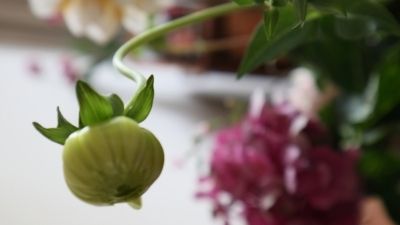
You can brighten your home with fresh flowers from your own bulbs if you are willing to do a little planning. Some flowering bulbs are easy to grow and require nothing more than potting and watering, while others are not quite as anxious to please. The pr
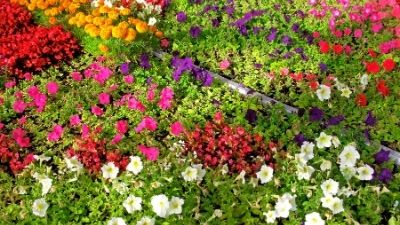
Annuals are plants that come up in the spring, reach maturity, flower, set seeds, then die all in one season. They provide eye-catching color to any flower bed and can be used as borders, fillers, or background plantings. There are several ways to find an
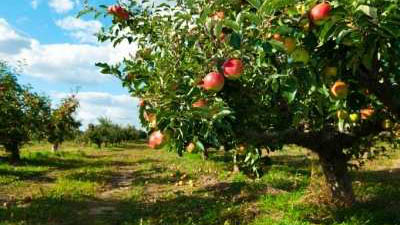
This bulletin presents appropriate information pertaining to growing apple trees in the home orchard. Success depends on several key factors.
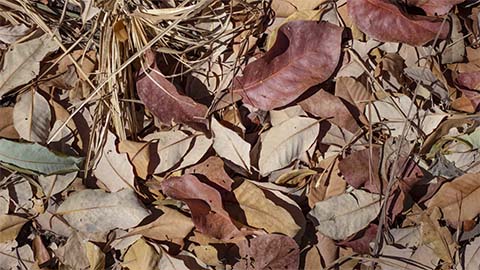
Each class of material has specific characteristics and management issues when it comes to using it as a soil amendment.
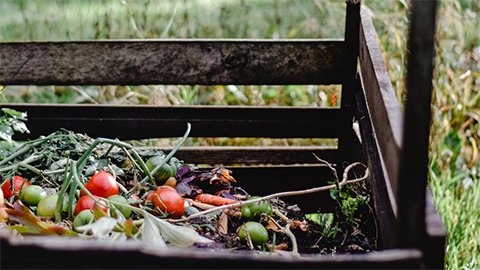
The benefits of using compost as a soil amendment include increasing soil tilth, fertility, water holding capacity, aeration, and drainage.
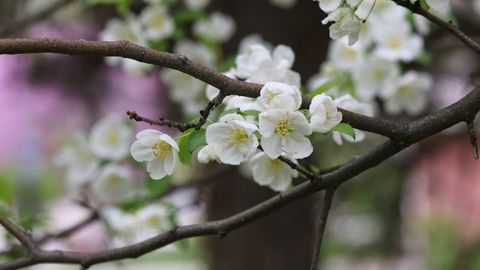
Many homeowners who are new to these regions wish to establish perennial fruit crops in their gardens. This publication outlines the challenges to fruit production in Utah’s high mountain valleys, offers mitigation suggestions, and lists plant materials t